Abstract
In a 12-month survey (June 1982-May 1983) 41 laboratories examined 2493 samples of goat's milk for colony counts and the presence of pathogens. The statutory tests for cow's milk were also applied. Surface counts of less than 10(5) organisms per ml of raw milk were given by 79% of samples at 37 degrees C and by 76% at 22 degrees C. There were less than 100 coliforms per ml in 71% of samples, less than 10 Escherichia coli per ml in 91%. Staphylococcus aureus was not detected in countable numbers in 96% of samples. Only one isolation of campylobacter was made and two of Yersinia enterocolitica. Salmonella was not detected in 2462 samples. The methylene blue test was carried out on 2368 samples and 86.7% were deemed satisfactory. No sample was Brucella ring-test-positive. Experiments on the survival and growth of six food poisoning organisms in stored goat's milk showed that Bacillus cereus, Staph. aureus, Salmonella typhimurium and Y. enterocolitica survived quite well and multiplied at the higher storage temperature of 30 degrees C. Clostridium perfringens only increased 10- to 100-fold while Campylobacter jejuni did not grow. The results of the survey indicate that any problems with goat's milk relate to poor hygiene during production rather than transmission of organisms from the goat herself.
Full text
PDF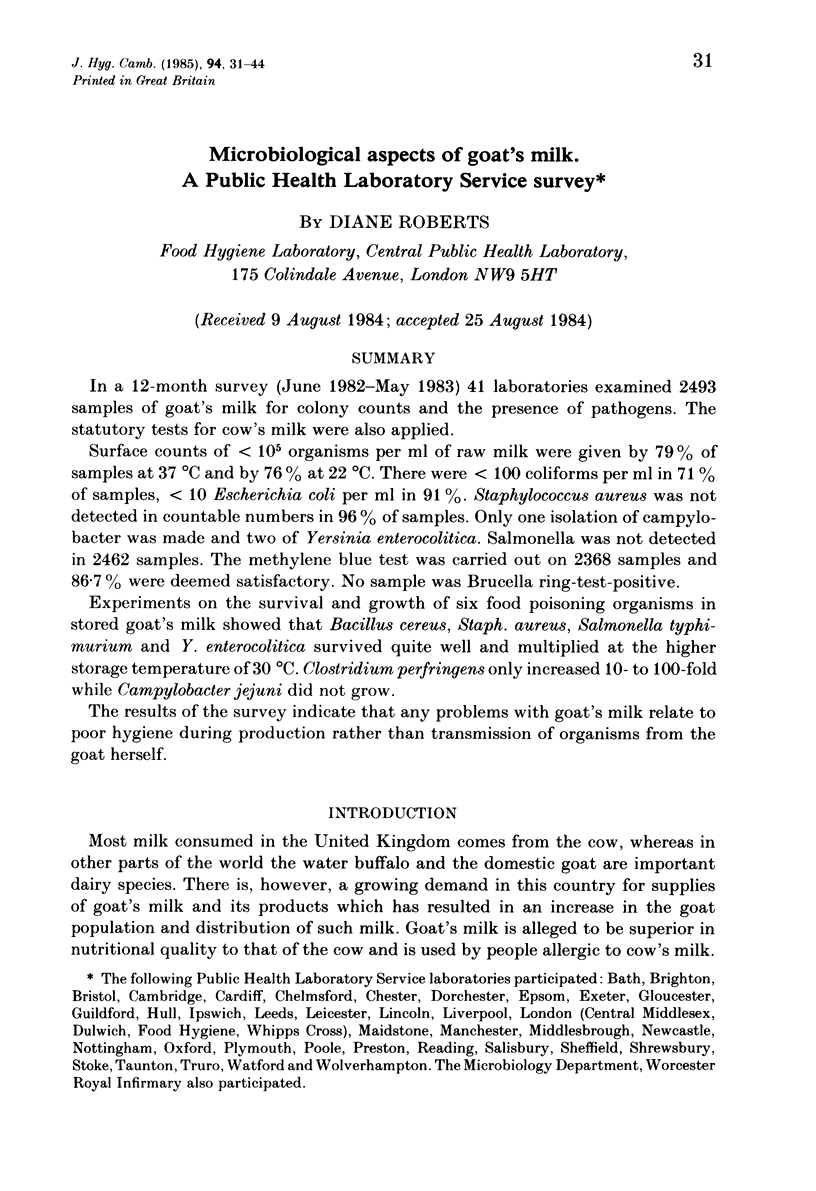
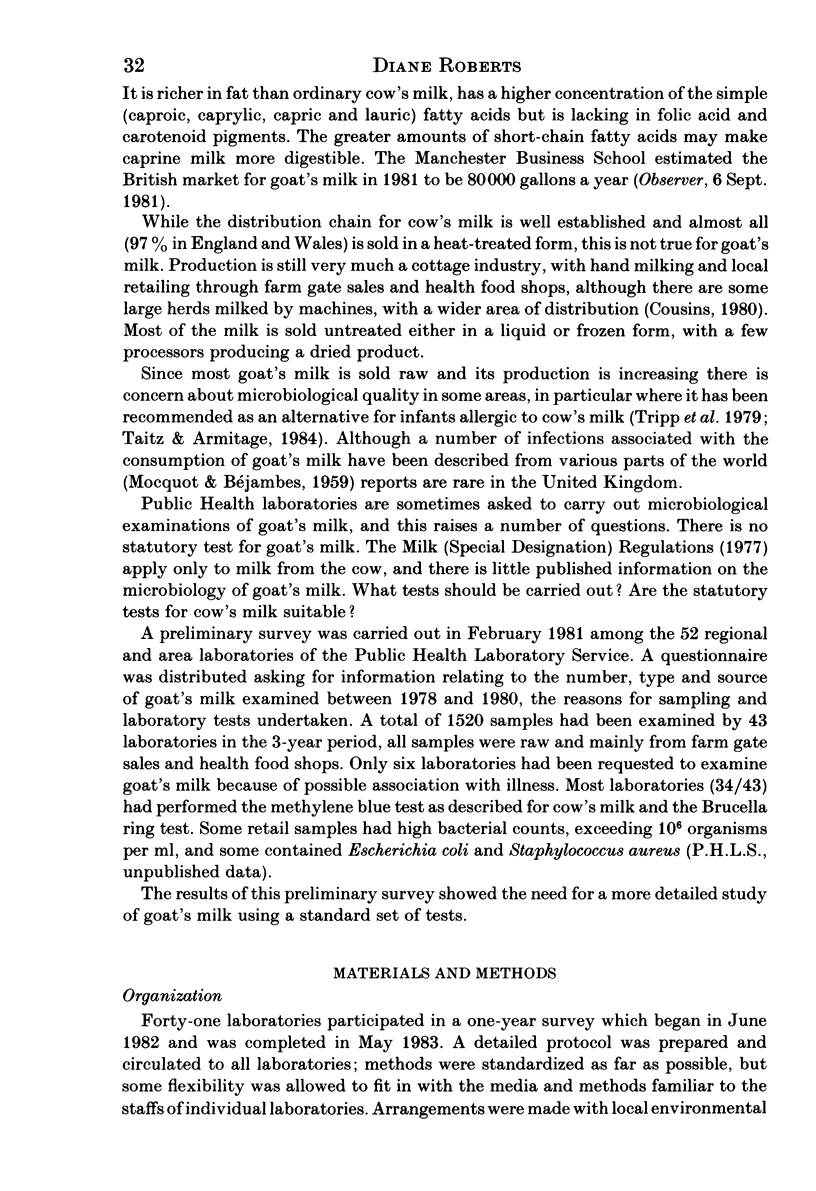

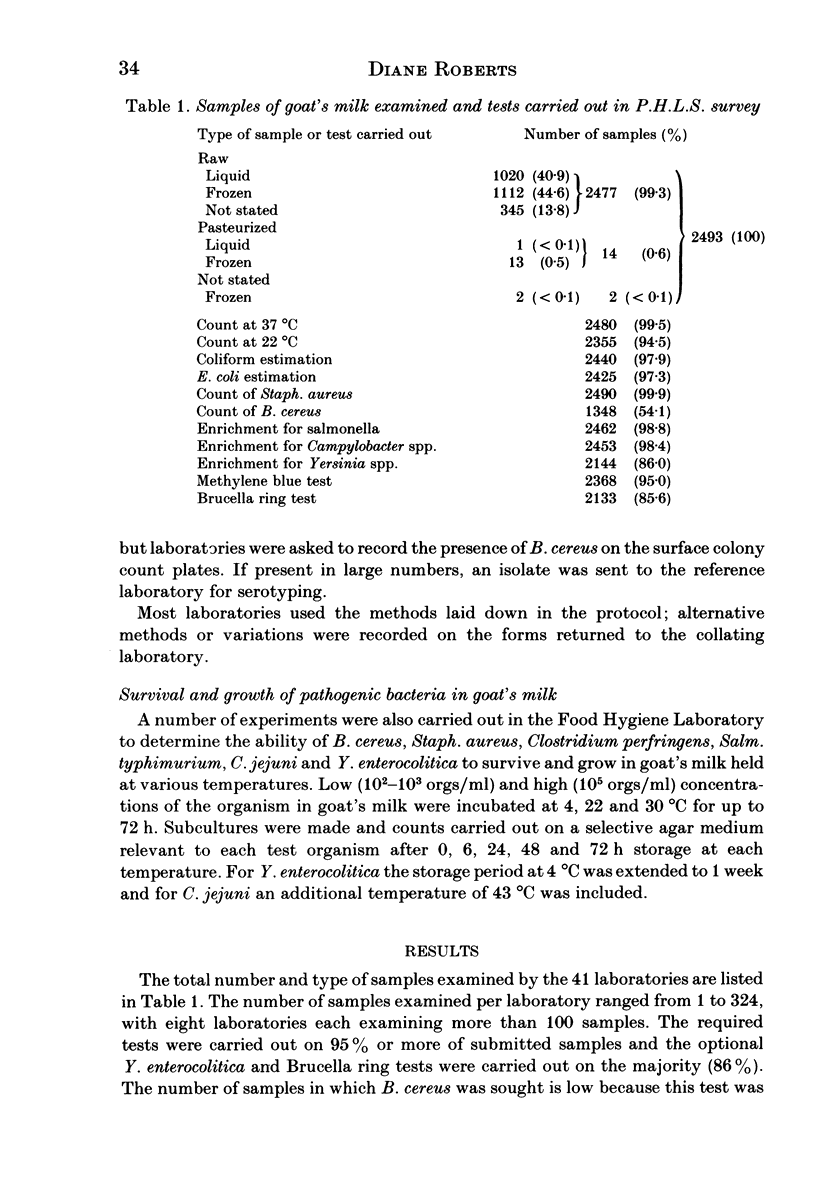
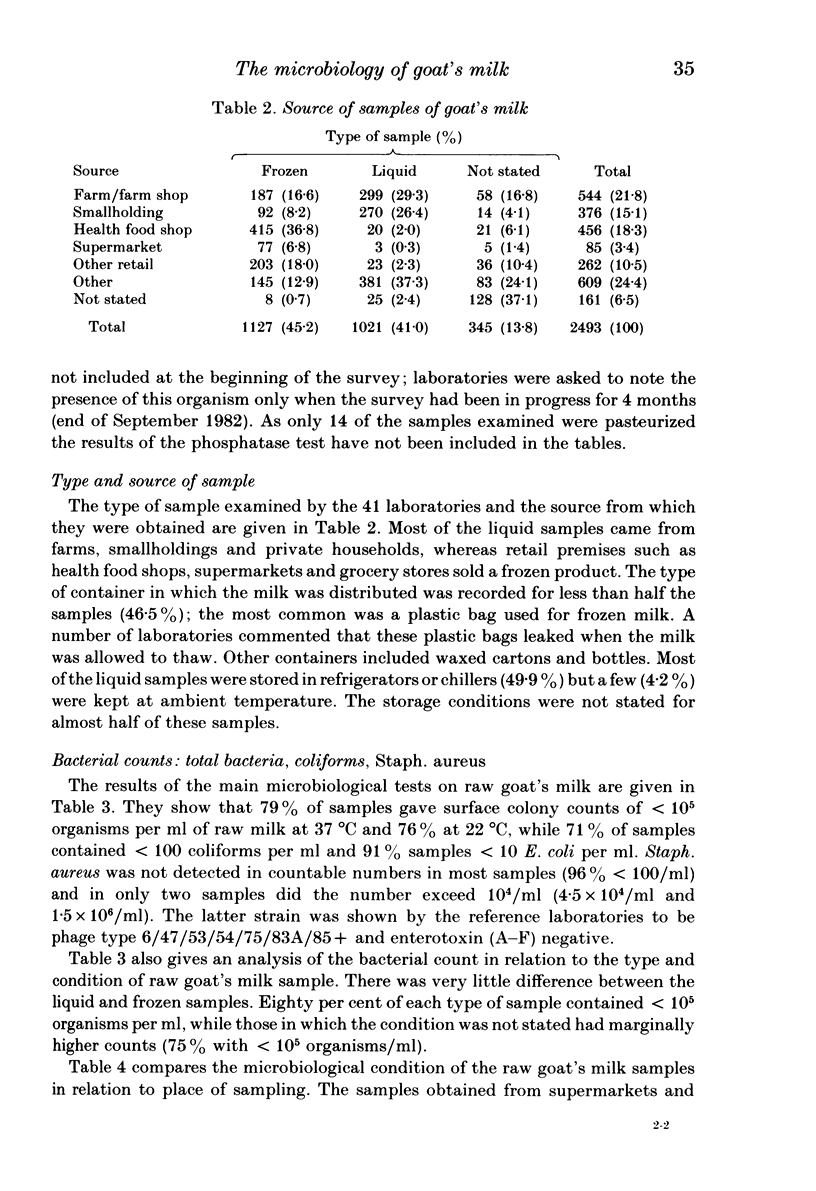
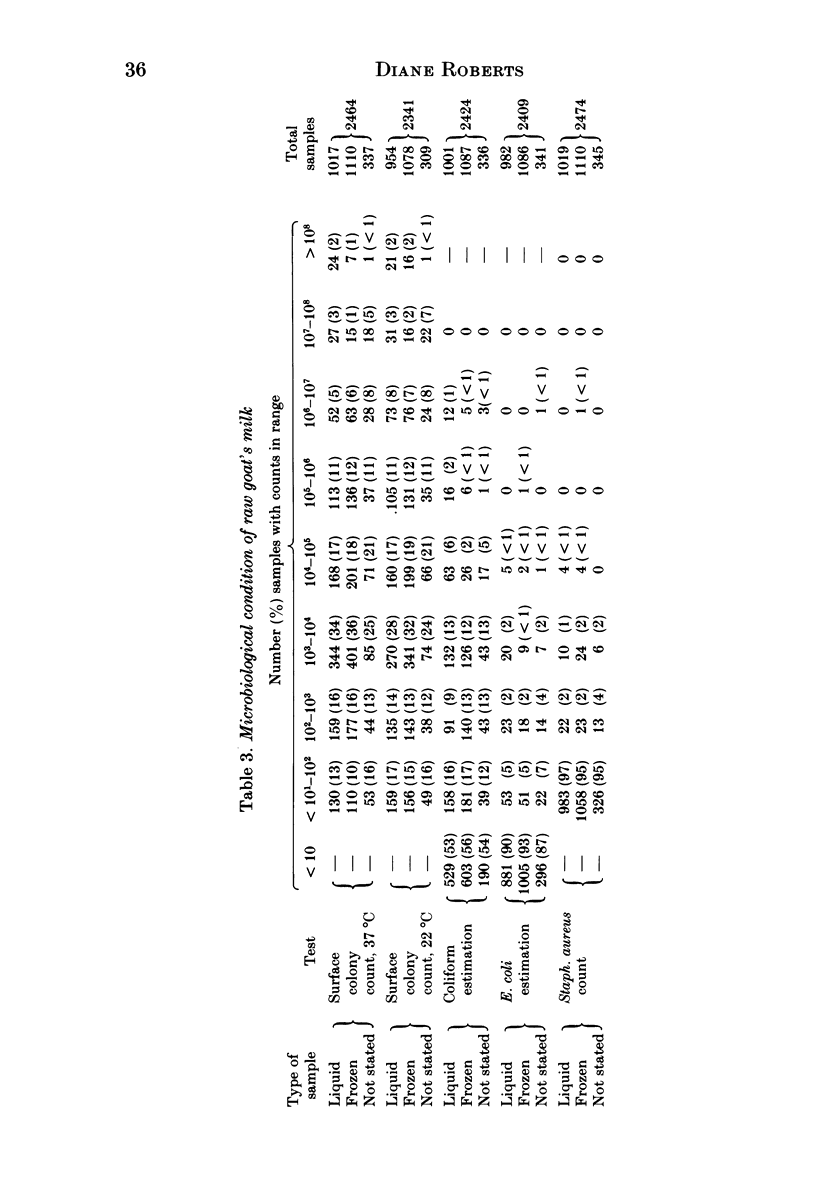
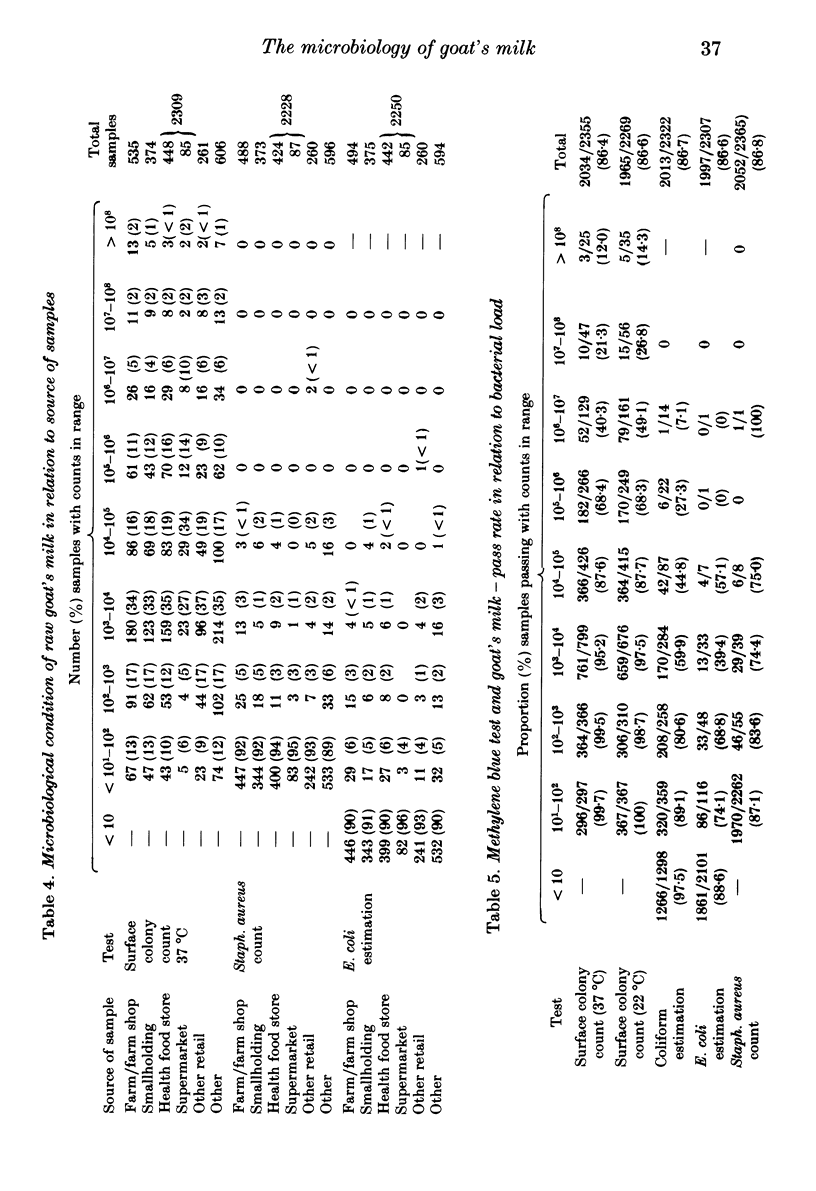
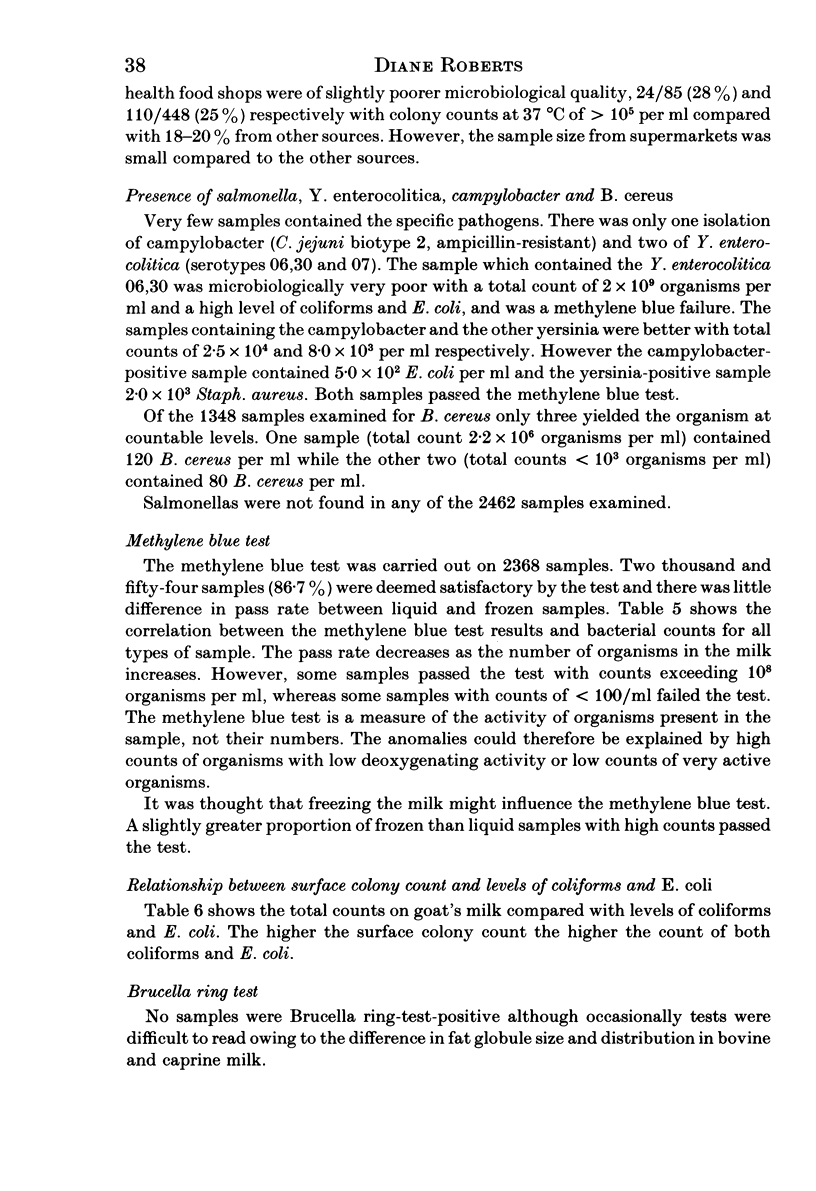
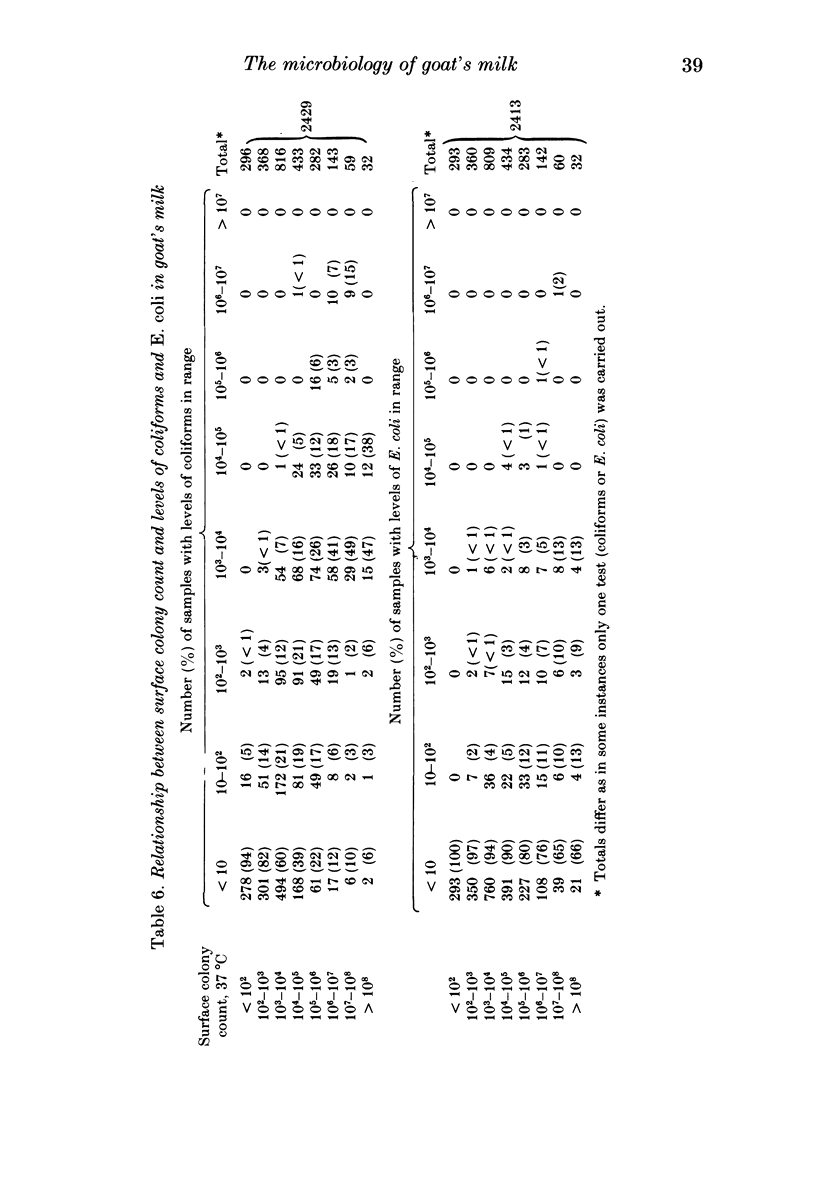
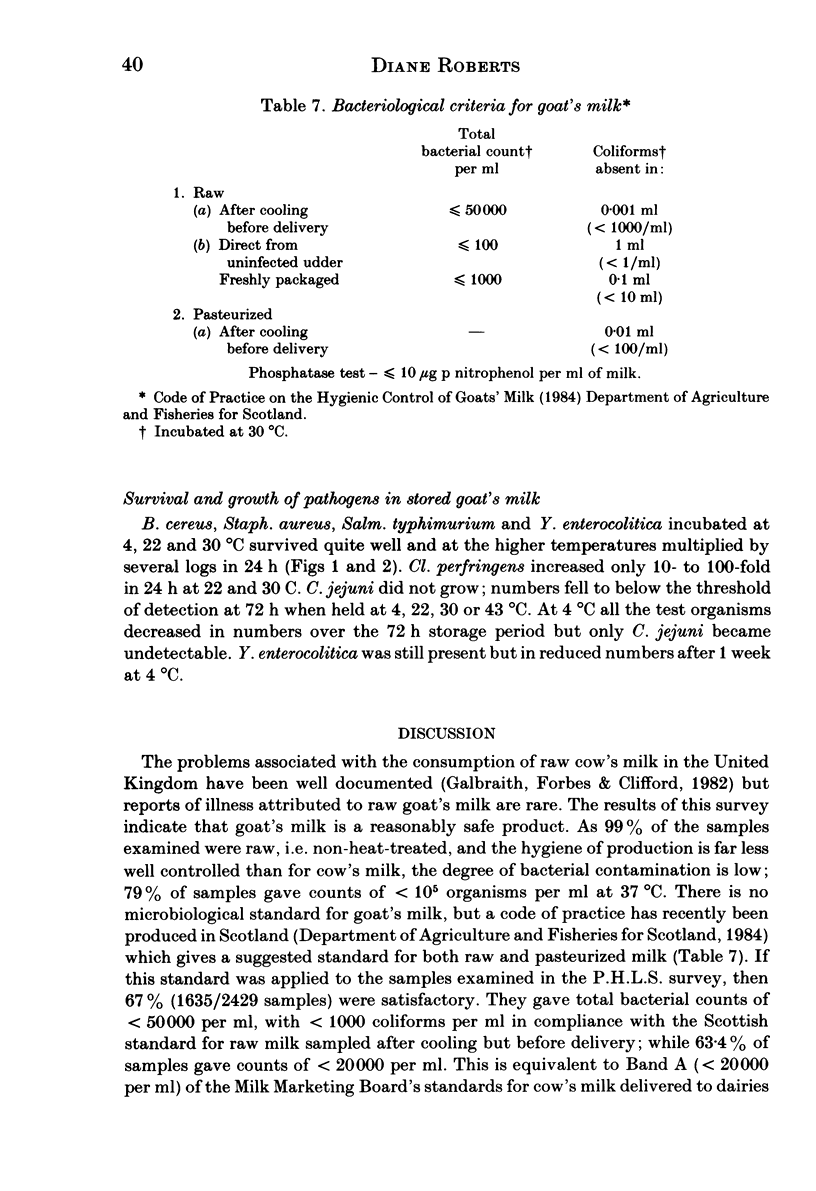
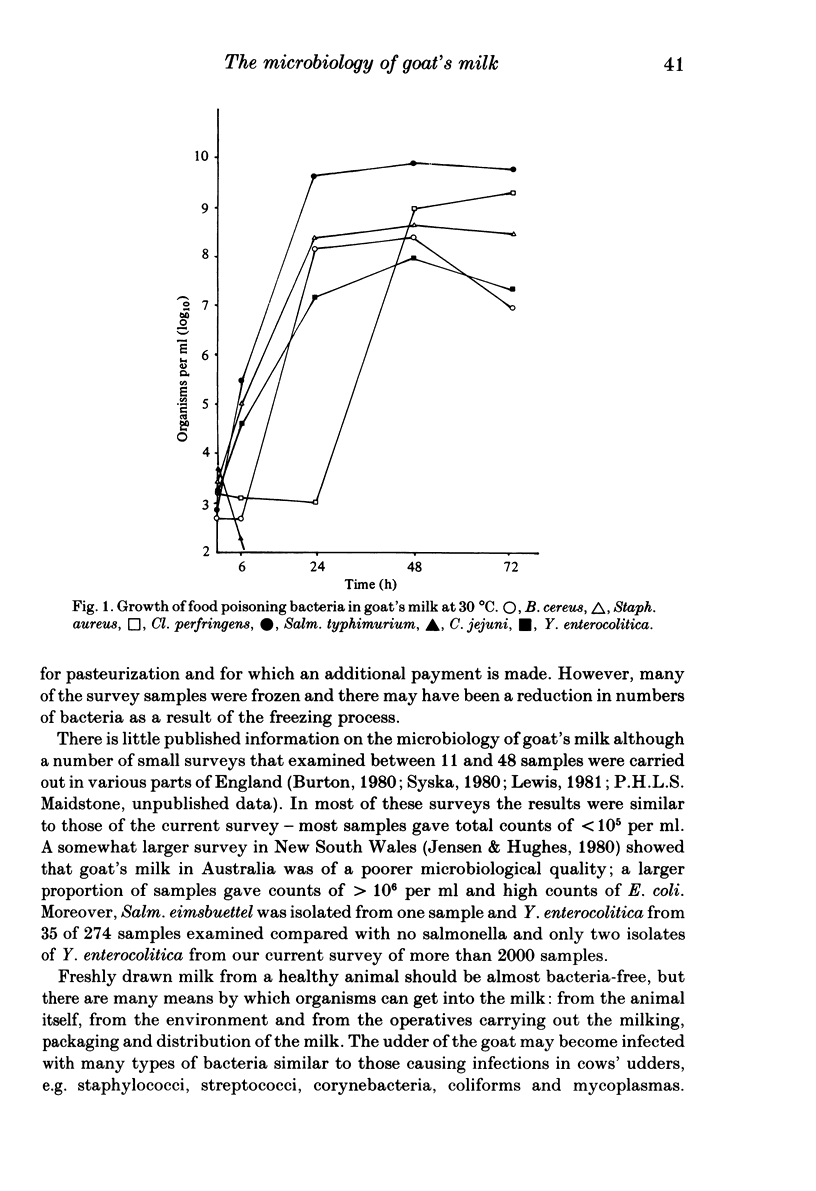
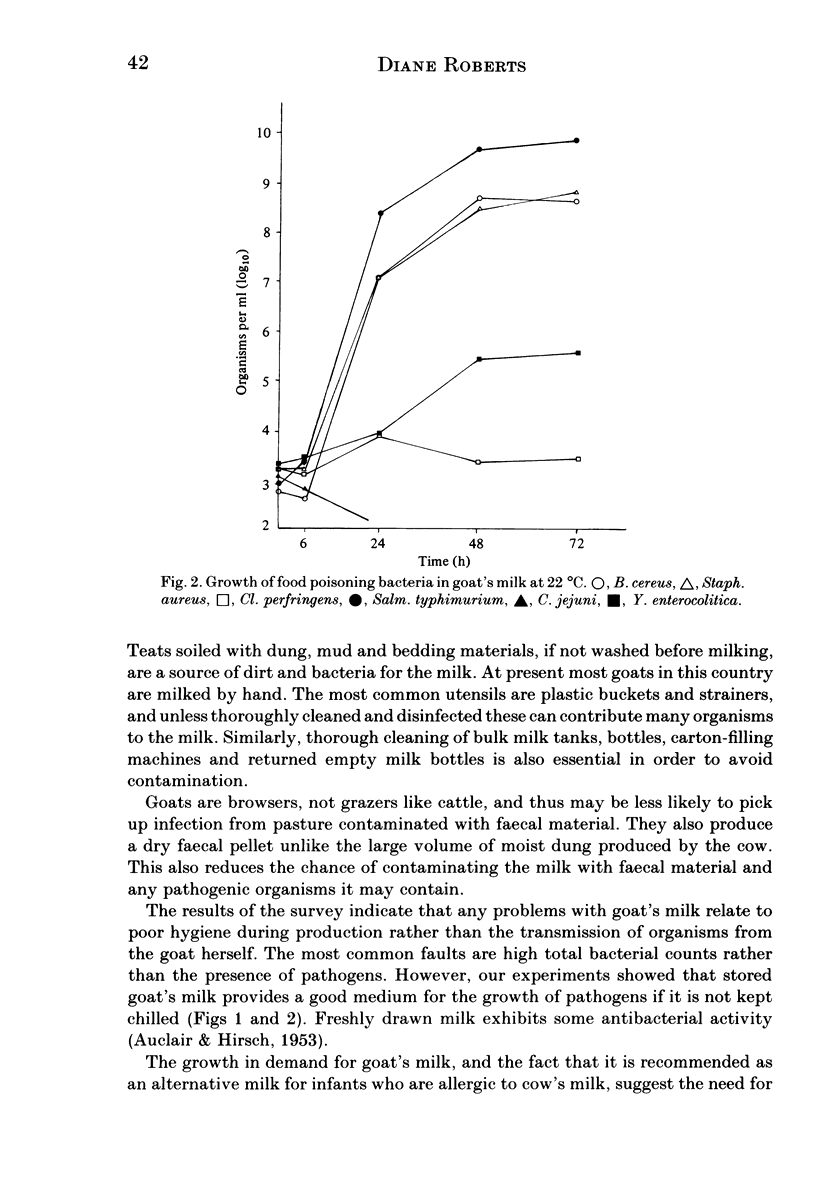

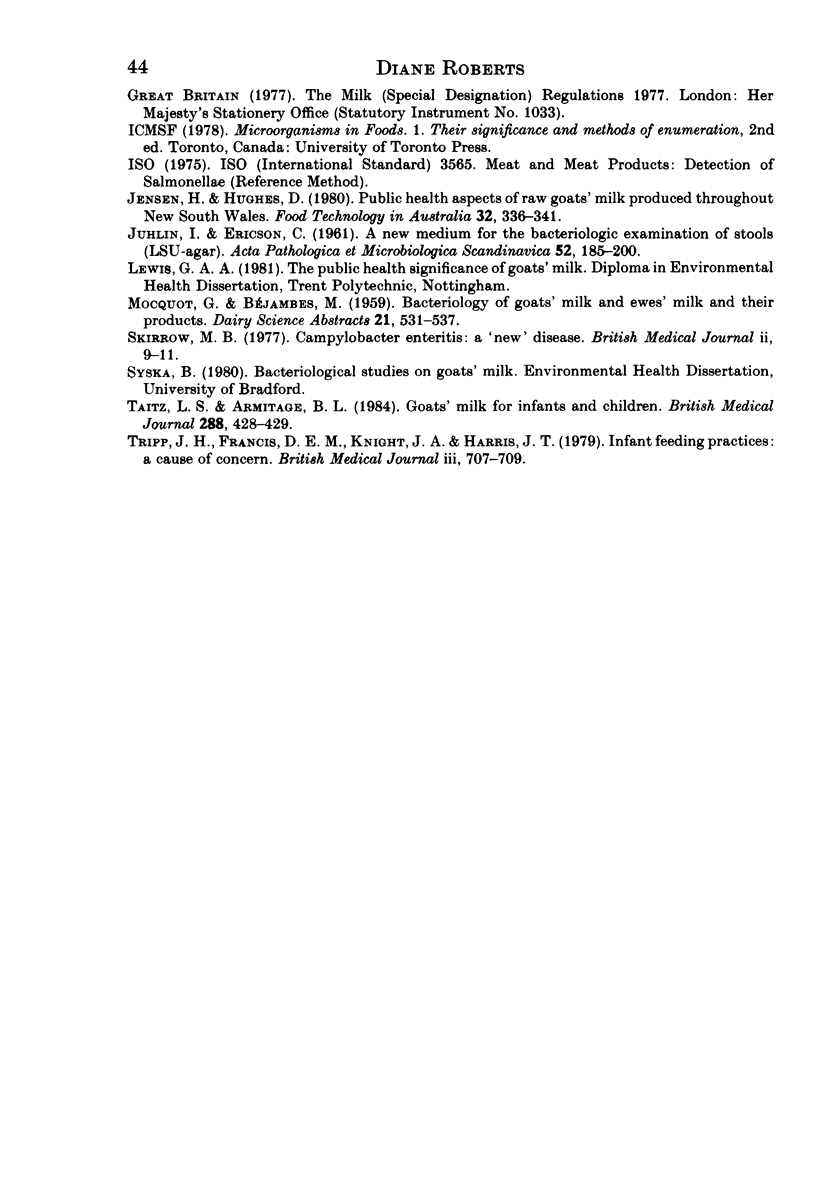
Selected References
These references are in PubMed. This may not be the complete list of references from this article.
- Bolton F. J., Robertson L. A selective medium for isolating Campylobacter jejuni/coli. J Clin Pathol. 1982 Apr;35(4):462–467. doi: 10.1136/jcp.35.4.462. [DOI] [PMC free article] [PubMed] [Google Scholar]
- Edel W., Kampelmacher E. H. Salmonella isolation in nine European laboratories using a standardized technique. Bull World Health Organ. 1969;41(2):297–306. [PMC free article] [PubMed] [Google Scholar]
- Galbraith N. S., Forbes P., Clifford C. Communicable disease associated with milk and dairy products in England and Wales 1951-80. Br Med J (Clin Res Ed) 1982 Jun 12;284(6331):1761–1765. doi: 10.1136/bmj.284.6331.1761. [DOI] [PMC free article] [PubMed] [Google Scholar]
- JUHLIN I., ERICSON C. A new medium for the bacteriologic examination of stools (LSU-agar). Acta Pathol Microbiol Scand. 1961;52:185–200. doi: 10.1111/j.1699-0463.1961.tb03192.x. [DOI] [PubMed] [Google Scholar]
- Skirrow M. B. Campylobacter enteritis: a "new" disease. Br Med J. 1977 Jul 2;2(6078):9–11. doi: 10.1136/bmj.2.6078.9. [DOI] [PMC free article] [PubMed] [Google Scholar]
- Taitz L. S., Armitage B. L. Goats' milk for infants and children. Br Med J (Clin Res Ed) 1984 Feb 11;288(6415):428–429. doi: 10.1136/bmj.288.6415.428. [DOI] [PMC free article] [PubMed] [Google Scholar]
- Tripp J. H., Francis D. E., Knight J. A., Harries J. T. Infant feeding practices: a cause for concern. Br Med J. 1979 Sep 22;2(6192):707–709. doi: 10.1136/bmj.2.6192.707. [DOI] [PMC free article] [PubMed] [Google Scholar]


